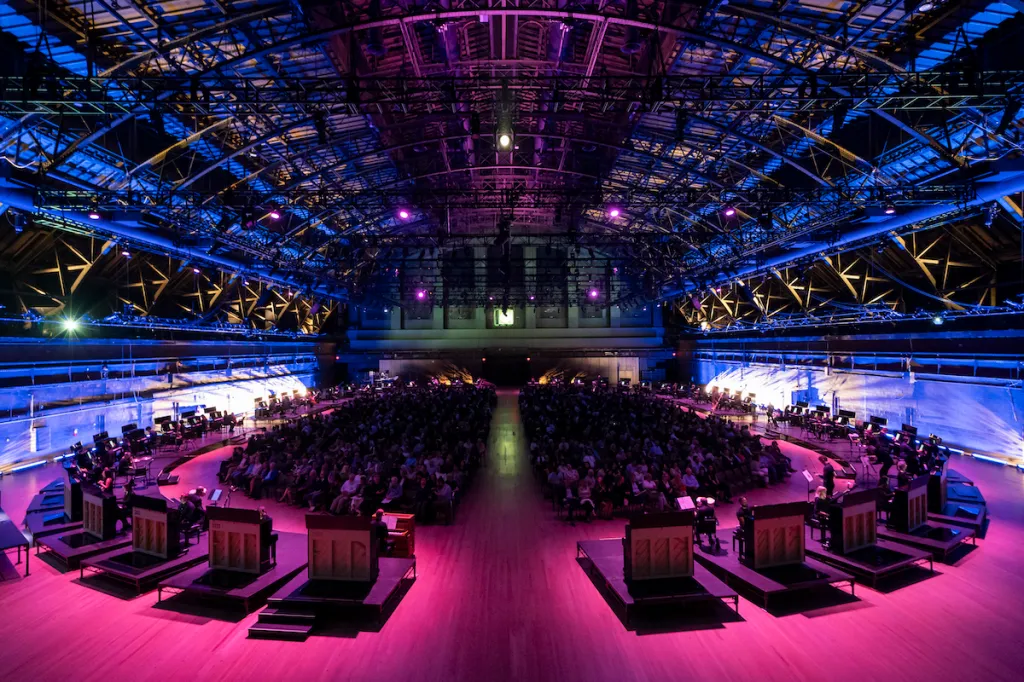It turns out 50 pianos playing together can summon many different sounds, including those of pianos that manage not to sound like pianos at all.
In New York’s Park Avenue Armory, an ambitious series of performances that commenced last night and continues through October 7 marks the North American premiere of 11,000 Strings, an orchestral piece by composer Georg Friedrich Haas that features 50 black pianos arranged in a ring. The lighting is understated, subtle yet spacey enough to evoke a different kind of atmosphere while showcasing the Armory Drill Hall’s overwhelming 55,000-square-foot expanse. That makes the sound the star of the show—and a lot of sound, to be sure.
The premiere on Tuesday began with the slightly martial clacking of 50 pianists marching into the Drill Hall—the opposite of a sound-image that has long stuck with me from Don DeLillo, who describes a character’s spacious apartment in Cosmopolis as “a mosque of soft footfall and rock doves murmurous in the vaulting.” After that, with silence established, 11,000 Strings began not with the pianos but what sounded like a harpsichord and a nervous, jittery buildup from strings, vibes, brass, woodwinds, and other instruments played by members of Klangforum Wien, the storied new-music ensemble from Austria.
The pianos introduced themselves as an abstract mass, with 100 hands playing their low notes in unison in a rushing rumble that sounded like a jet engine barreling through thunder. Then, a dramatic pause, to let all the tones dissipate and decay, before a startling jump incited in large part by musicians at two expansive percussion stations.
As it stretched out over slightly more than one hour, 11,000 Strings made its way through different moods, with a patient focus on tone and texture over melody or anything that might be perceived as pretty or preoccupied with the novelty of its 50-piano arrangement. It’s strange, tense, discordant music that at times evoked György Ligeti, Krzysztof Penderecki, and Karlheinz Stockhausen (whose electronically inclined opera-cycle Licht was a highlight of the Park Avenue Armory’s programming last year).
11,000 Strings at the Park Avenue Armory.
Stephanie Berger
In the program notes, Haas wrote about having received an invitation to compose for 50 pianos while isolated in a house in Morocco during the pandemic and finding the utopian scenario “like a greeting from another world, like a ray of hope.” His hope seems to have been tempered, but it remains evident in music in search of something powerful and profound.
Though the pianos are microtonally tuned, they widely varied in what they conjured, with the sounds of the rest of the ensemble—25 musicians in addition to the 50 pianists—playing an equal and at times dominant role in the performance overall. Many played multiple roles; flautists stood up to play hand drums, and cellists devoted time to cymbals by their side, to be eerily scraped with bows. Near the end the pianists all donned black gloves, seemingly to soften their playing but then also to rise to a crescendo during which they each swayed side to side in a sort of sustained glissando trance. Taking it in felt like sitting in a spaceship being rocked by cosmic waves.
